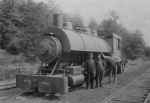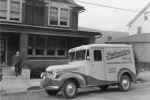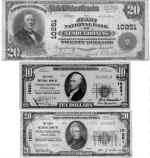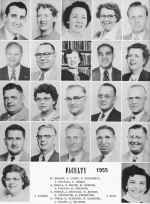
| |
|
Cover |

|
Click on pictures to enlarge and click your back
button to return. |
|
January |

|
|
|
When coal was first discovered at Nesquehoning in
1785 men used sledgehammers to break it into small pieces. In the early
1800’s coal processing plants known as breakers were built. The first
breaker at Nesquehoning was run by waterpower, and it is believed that
with a single exception it was the only one thus operated in the
anthracite region. There were several breakers built at Nesquehoning
throughout the years. The one shown in this picture was built in 1908;
it was the last breaker at Nesquehoning. The total production of coal
that year was 381,422 tons, and was sold for $2,288,532. In 1909 this
breaker processed more than 502,000 tons and 712,000 tons in 1910.
Weight was measured in long tons of 2,240 lbs. There were 1,420 mine
cars loaded at this breaker during a single day in August 1911. It was
steam powered until 1918 when it was electrified. The coal from
Nesquehoning had the distinction of being the highest quality anthracite
coal ever found, not only in the Panther Valley, or in Pennsylvania but
the entire world. When the government bought coal, it was tested and had
to meet certain standards. The government always bought coal from the
Nesquehoning mines; even other coal companies would buy coal from
Nesquehoning to mix with their coal, so it would pass the governments
tests. Many coal dealers demanded that the coal they received come from
the mines at Room Run. It is said the term “black diamonds” was
first used when a Philadelphia coal dealer described coal from
Nesquehoning’s Room Run mines. He said “when shoveled it has the
sound of glass and it sparkles like black diamonds.” This breaker was
abandoned Dec. 31, 1947 and on July 28, 1948 the breaker was sold for
scrap.
|
|
February |

|
|
|
1931 basketball team. Top row, left to right, George
Roscoe, Jackie Grainger, William Bincarowsky, Buddy Large, Cramer
Grover, Adolph Wasas, Louie Beneck and Harry Donald. Front row, left to
right, Johnny Kusko, Steve Kusko, Jimmy Shelhammer, Johnny Hotsko, Mike
Hudicka and Ed Speshok. This team ended its season in 2nd place in the
Carbon Schuylkill League. |
|
March |

|
|
|
Steam locomotives used by the coal company were
called lokies. Lokies were various sizes depending on what they were
used for. The one in this picture was considered large and would pull up
to 30 loaded cars. Surface, open pit or more commonly called strip
mining relied heavily on the use of these lokies. Millions of tons of
dirt and rock called overburden had to be removed to get to the coal.
This picture was taken at Nesquehoning in the early 1900’s. Frank
McCabe, a long time and well-known lokie engineer at Nesquehoning, is
the only person identified in the picture, he is the third man from the
left. These lokies were extremely powerful machines and at times would
become unruly and uncontrollable. On July 12, 1914 an engineer at
Nesquehoning said his lokie became unmanageable and he tied down the
whistle and leaped for his life. It finally crashed into a rock train,
badly damaging the lokie and cars. Frank had some frightening and scary
experiences with these machines. The following was an article in the
local newspaper dated August 31, 1907. THRILLING RUNAWAY. Lokie engineer
Frank McCabe seriously injured on the trolley track. Frank McCabe of
Nesquehoning, the engineer on one of the lokies at the Nesquehoning
colliery had a thrilling runaway at that place at 8 on Tuesday morning.
His engine went over the bank and into the dirt until out of sight and
McCabe was very severely injured. His left arm is broken and his spine
is injured. Friends took him to St. Luke’s hospital. Four others were
on the engine at the time. Joseph Evans the fireman, two Hungarian young
men as brakemen and Richard Fegley who was piloting the lokie over the
trolley track, these all escaped. The accident happened on the Eastern
Pennsylvania electric railway. After the trolley cars stopped running at
midnight McCabe began hauling material with his lokie from Lansford to
the Nesquehoning colliery. He was coming down No.6 hill with a big
gondola of sand attached to his engine. Half way down the lokie got
vicious and it took but a few minutes to cover the rest of the distance.
With the speed of the wind it flew over the first crossing at No. 2 dam
and then over the second, and with a bound she jumped the track and
bored into the adjoining bank. The trolley track was much bent and
twisted.
|
|
April |

|
|
|
Hauto, October 1902, rent $2.00 per month was written
on the bottom of this picture. Hauto Valley was named after one of the
founders of the Lehigh Coal and Navigation Company, George F. A. Hauto.
Shortly after the completion of the Nesquehoning Valley Railroad in
1863, a tunnel was dug through the Nesquehoning Mountain, linking the
Panther Valley and Hauto Valley. A settlement (Hauto village) was
started when a coal processing plant was built there in 1873 that
employed over 100 men. W. Tippett opened a post office at Hauto in July
1883. In 1913 the worlds largest coal burning power plant was built at
Hauto.
|
|
May |

|
|
|
In the early 1900’s, James Newton opened a theatre
on W. Catawissa called the Empire Theatre; the movies in those days had
no sound so Mr. Newton would hire someone to play a piano during the
movie. The Empire Theatre closed in 1928. In 1924 a new theatre was
built next to the High School, called the Strand. The building was
40x150 feet, and had a seating capacity of 1,000. They boasted ladies
and gents toilet rooms and every accommodation of a modern theatre. The
stage accommodated the largest kind of a show company, although moving
pictures and vaudeville were featured. In 1929 the Strand became the
Roxy. When the Roxy opened on 11-22-1929 the local newspaper said,
“Talkies at the Roxy Theatre have taken the people of Nesquehoning by
storm. Capacity crowds nightly express their delight with the perfect
sound.” Starting in the 1950’s there was a steady decline in
business; theatre owners said the culprit was the television. The Roxy
Theatre closed in the 1960’s.
|
|
June |

|
|
|
This 1940 photo shows Lenious Marsden and his milk
delivery truck in front of his home at 106 E. Center St.. In 1917 Len
and his twin brother Bob were among the first to answer their countries
call for World War I. On November 15, 1920 Len purchased William
Bectel’s milk route. Len was a well known young man, a volunteer of
the World War who fought with distinction over there and he promised to
give his patrons the benefits of the promptest and best service
possible. Len started delivering milk using a horse and wagon. A
newspaper article dated 3-12-1923 read – “Dairyman Len Marsden’s
horse become scared as he was being driven on East Catawissa Street,
Friday, and was rather unmanageable for a time engaging in a kicking bee
that demolished the front of the wagon and which will likely earn him an
indefinite furlough for the good of the service”. In 1928 he
built a modern and roomy garage behind his house, 26x30 feet with a
capacity of four cars and quarters in which to conduct his dairy
business. He retired in 1961. |
|
July |

|
|
|
The first two blocks of East Railroad Street were
known as "Red Row." These were houses built by the Lehigh Coal
and Navigation Company. In 1902, the rent was six dollars per month,
which included one ton of coal provided every month by the company.
These were the most expensive houses the company had; others were rented
for as little as one dollar per month. Before the water system was
installed in Nesquehoning in 1908, people would get their water from
wells or springs. Barely visible in this picture between the second and
third house from the left is a well with a hand pump. People who lived
in this neighborhood shared this one well. |
|
August |

|
|
|
This picture was taken at Hauto Dam in August 1922.
Writing on the picture said “Will Watkins & Porky diving.” Coal
breakers used enormous amounts of water in the washing process. The
Lehigh Coal and Navigation Company built many dams to supply water to
these breakers, Hauto being on of them. In 1883 the dams capacity was
220 millions gallons. In 1913 the LC&N built a coal burning power
plant here, it was the largest in the world and ranked 2nd in high
voltage, Niagara Falls being 1st. The water supply needs of the plant
were 300,000,000 gallons daily, most of which was carried back into the
dam after condensation. A new dam was built 1700 feet in length and the
height of its embankment 31 feet, 150 feet was the width of the dam’s
base, and 15 feet the width to which it slopes at the top. In 1923 the
breast of the dam was raised, bringing its capacity to 1,250,000,000
gallons. In 1916 the Hauto Dam became a fashionable bathing resort, a
miniature Atlantic City. What Atlantic City was to the Eastern Coast,
Hauto Dam was to Nesquehoning. Hundreds fished and bathed daily, quite a
number of ladies were among those who indulged in dips in the cooling
water, a jitney ran between it and Nesquehoning for the accommodation of
the patrons. Boating was also a feature of the resort. On June 4, 1916,
James Newton launched his new motorboat on the Hauto dam. It was made by
himself and was named “Anna.” Ben Oxley assisted in the launching.
It was the pride of the Nesquehoning boat club. The Nesquehoning Boat
Club held outings at the dam, a feature was a clambake and music
furnished by the Williams Orchestra. During the First World War it
become necessary to keep all persons away from the Hauto dam on which
depended the operation of the Hauto power plant. Guards were placed
around the dam and a vigilant watch kept over it. After the war the dam
returned to its former resort status as seen in this newspaper article
dated July 5, 1921, “Hauto was a mecca for thousands of people
escaping the terrible heat in the past few days. The beautiful bathing
spot was aglow with varicolored bathing suits and many people enjoyed
the boating. Gabor Wasas conveyed a bevy of young ladies on Monday. They
report having a wonderful time. Mr. Wasas has secured a license to take
auto parties to parks and any desired places.” |
|
September |

|
|
|
This photo was taken in the early 1900’s. The
Lehigh Coal and Navigation Company hired outside contractors such as
Joseph Zehner Stripping Contractor and Loomis and Co. to do the surface
mining or more commonly called strip mining. When a vein of coal lies
near the surface of the earth it is mined in the way shown in this
picture. All the dirt on top of the coal is removed by big steam
shovels, one of which you can see at work. By the stripping method all
the coal can be mined, but in mining from shafts, supports of coal must
be left at certain distances apart to hold up the ceiling. Although
strip mining required less manpower, the cost of drilling and blasting,
cost of explosives and the removal of millions of tons of dirt and rock
made this type of mining expensive. In a normal year, two and one-half
million cubic yards of overburden were removed to produce 625,000 tons
of coal. Many of the employees of these stripping contractors were from
Little Italy. Because these workers were not union members it caused the
union miners to protest. On November 8, 1915, Little Italy started a
local union of the United Mine Workers. The organizers were Paul
Petrucci and Leo Morelleu.
|
|
October |

|
|
|
Nesquehoning Cheerleaders 1963. Mascot: Michele
Belovich. FIRST ROW, Left to Right: Mary Lou Sluck, Inez Sehar, Barbara
Kravelk, Mary Ann Lukac. SECOND ROW: Roxanne DeAngelis, Roseanne
Cannariato, Sandra Williams, Ilona Thear, Martha Jean Slivka, Christine
Yaniga.
|
|
November |

|
|
|
This is a photo of E. Catawissa St. in the early
1900’s. The residents of Nesquehoning were pleased when trolley
service came to town in 1902. For 5 cents they could go to Mauch Chunk
or Lansford, and the miners could ride to work instead of walking. In
the 1920’s a lot of people had automobiles and they became less
dependent on the trolley. By the end of the 1920’s many people
complained about the trolleys and wanted them removed. Local radio set
owners were loudly and justly complaining of the unnecessary static from
the bad street railway bonding and the leakages in the high-tension
electric lines. Citizen’s also complained about the high number
of children that were injured and killed by the trolley cars. In 1931
the trolley was discontinued, and the tracks removed. Busses took the
place of the trolley. |
|
December |

|
|
|
Nesquehoning’s scrapbook. 1. Nesquehoning’s first
traffic light. 2. Jane Zlock, Legion Band. 3. Jacob Buss, born in 1834
was a pioneer resident of Nesquehoning. After the Civil War he became
the landlord of the Landing Tavern, at the mouth of the Nesquehoning
Creek, in 1872 he became the landlord of Nesquehoning’s Miner’s
Hotel. He was also one of the first directors of the Nesquehoning
Building and Loan Association when it was chartered in 1889. “Old
Jake,” as he was familiarly termed, was the ideal landlord. Generous
to a fault, open hearted, free from guile or envy, everybody liked him
and respected him. He was a plain, blunt business man who spoke as he
thought and meant what he said, never fearing to give an honest opinion
on any question whatever. Appeals for aid were never brushed lightly
aside, no matter by whom made. He was scarcely ever angry and when angry
could control himself with a firmness that was truly remarkable.
Although in the business for over 40 years, he was strictly temperate
and was never known to have indulged to excess 4. Joe Hadnagy on E.
Railroad St. Joe died at an early age due to a shooting accident. 5.
Children swimming at Curry’s Grove. 6. Celebrating the end of WWII in
New Columbus. JoJo Digilio, Sam Alonge, Joni Digilio, Charles Vaccro,
Charlie Lopresto, Bill Santore, Juice Cermele, Dan Greek, Sam Greek,
Louie Nardozzi, Louie Mele, Bandy Rutch, Joe Riccette and Anthony Mele.
7. Ed Watkins and Chief McGinley in the 1950’s.
|
|
Inside Back Cover |

|
|
|
At one time banks were allowed to issue their own
money. Above are three examples of these bills issued by the First
National Bank of Nesquehoning. The top one was issued in 1912, John
Corby cashier and Levi Marsden president. The one in the middle is from
1929, and is the first bill of that series, A000001A. John Corby
cashier and Levi Marsden president. Both Corby and Marsden signed their
names above their printed names on this bill. The bottom bill is from
the 1929 series, John Corby cashier and John McDonald president. On
February 12, 1920 there was an attempted bank robbery, the following are
articles that were in the newspaper.
2-12-1920 - Daring attempt to rob Nesquehoning bank
by masked man frustrated. A daring but unsuccessful attempt was made to
rob the First National Bank, at Nesquehoning at 4 a.m. today by a masked
desperado armed to the teeth and determined to kill if necessary to
accomplish his purpose, but the plucky, nervy wife of John C. Corby,
cashier of the bank frustrated his designs by her daring act in putting
her foot on an alarm which led to nearby houses and aroused the
occupants, augmented by the faultless system of protection with which
the bank is equipped. It was at 4 a.m. that the desperado forced
an entrance into the Corby home. He did his work so quietly and
effectively that Mr. and Mrs. Corby were not aroused from their slumber
by his intrusion. With kit of tools he jimmied a rear window open. The
first intimation they had of the presence of their unwelcome visitor was
when the burglar thrust a flash light on Mr. Corby and at the point of a
gun commanded him to get up and open the safe. Mrs. Corby was commanded
at the same time to accompany her husband and make no outcry under
penalty of death. Mr. Corby remonstrated with the burglar that he
was powerless to open the vault which is operated by a time lock.
“Very well,” said the desperado “we will wait until it opens”
which is shortly before opening of the bank for business each day.
After waiting some time, Mrs. Corby was inspired with the plan to spread
an alarm by reaching and touching the alarm with her foot and with quick
wit executed the act. The burglar alarm rings only at the home of Wesley
Norwood and Levi Marsden. Unable to open the vault the desperado
compelled Mr. and Mrs. Corby to retire to their bedroom where he bound
them. Mr. Corby with rope and Mrs. Corby with an electric light
extension wire because there wasn’t enough rope. In the meantime he
sat at the top of the stairway awaiting the opening of the vault. A
short time later people began to arrive in response to the alarm.
The burglar heard them and knowing he had been tricked fled in wild
disorder by way of a rear door. It was Levi Marsden who scared him by
ringing a doorbell. Mr. and Mrs. Corby were released from their
bondage by their rescuers and made as comfortable as possible. Mrs.
Corby was sick in bed when the burglar called, but he had no regard for
her condition and subjected her to the peril of endangering her health
by compelling her to leave her bed and go down stairs. Mr. Corby was the
object of the burglar’s constant attention. He kept him covered with
his gun every minute. He realized the danger of permitting a relaxation
upon Mr. Corby whom he appreciated would give him a fight if the
opportunity afforded. It was in this way that Mrs. Corby was allowed a
little leeway and took due advantage of it to the burglar’s sorrow.
The burglar under all kinds of dire threats tried to make Mr. Corby
reveal the concealment of valuables and securities outside of the vault
but Mr. Corby was unyielding in his position that everything of value
was in the vault. It was a trying moment for Mr. Corby, who knew not the
minute the burglar, would shoot and kill him, but despite his peril he
remained steadfast that he was useless to the burglar. It was a critical
situation for Mr. Corby, but it proved his unflinching nerve and mettle.
There is no doubt the robbing of the bank was well planned. The burglar
evidently selected the special time for the robbery an account of the
day being a holiday, Lincoln’s birthday, when the bank would be
closed. He figured on being compelled to await the opening of the vault
by the time clock in the absence of the failure of Mr. Corby to open it.
He figured on coolly getting away with his loot. The only description of
the burglar they observed was that he was masked and wore a light
colored overcoat, was medium in height, thick set and wore a black
slouch hat. He disappeared via. C. R. R. tracks going Westward. Mr. and
Mrs. Corby suffered considerably from shock. This was but a natural
sequence to the exciting encounter through which they passed. The
robbery indicates the desperation of the money-crazed criminals when
they shift the scene of their operations to country banks. The directors
of the bank met this morning and assured the patrons of the bank that
not a cent had been taken which they attributed to the up to date system
of protection installed at the bank. There was general relief that Mr.
and Mrs. Corby weren’t harmed, the robbery being a second
consideration.
2-13-1920 - No trace of bank robber. John C. Corby,
cashier of the First National Bank, Nesquehoning was on the job today
despite the thrilling experience with a burglar the morning previous.
Mrs. Corby is in bed. She was ill for a week when the robber appeared.
Her condition has been aggravated by the shock she suffered. There is no
clue to the desperado. It was evident he was well acquainted with the
lay of the land, apparently having mapped out his line of procedure from
a prior visit to the building. His equipment would indicate that he was
a professional. An amateur would hardly be as cool and collected. No
reward has been offered for the arrest and conviction of the robber as
yet. As a matter of protection to other banks in the county and as a
lesson to the burglars that they will not be permitted to ply their
nefarious trade in this county, the county commissioners should offer a
reward for the arrest of the robber. No doubt the directors of the
Nesquehoning National Bank will take suitable action with regard to
effecting the arrest of the burglar by the offering of a substantial
reward. The attempt to rob the bank verifies the good sound judgment of
the directors in making it burglar proof. It is gratifying to them as
well as the patrons of the bank and the general public that the bank was
put to the test and proved its efficiency as burglar proof. General
gratification is felt over the fact that Mr. and Mrs. Corby weren’t
harmed by the robber. Few women would have the presence of mind in such
a trying moment as Mrs. Corby in putting her foot on the burglar alarm.
It was that act that saved the bank from being looted at the opening of
the vault at 8 a. m., which the robber was waiting for. He evidently
intended to get the money and coolly walk away with it in broad
daylight. Only a professional would have the daring to do this. Mrs.
Corby is deserving of a hero’s medal. |
|
Back Cover |

|
|
|